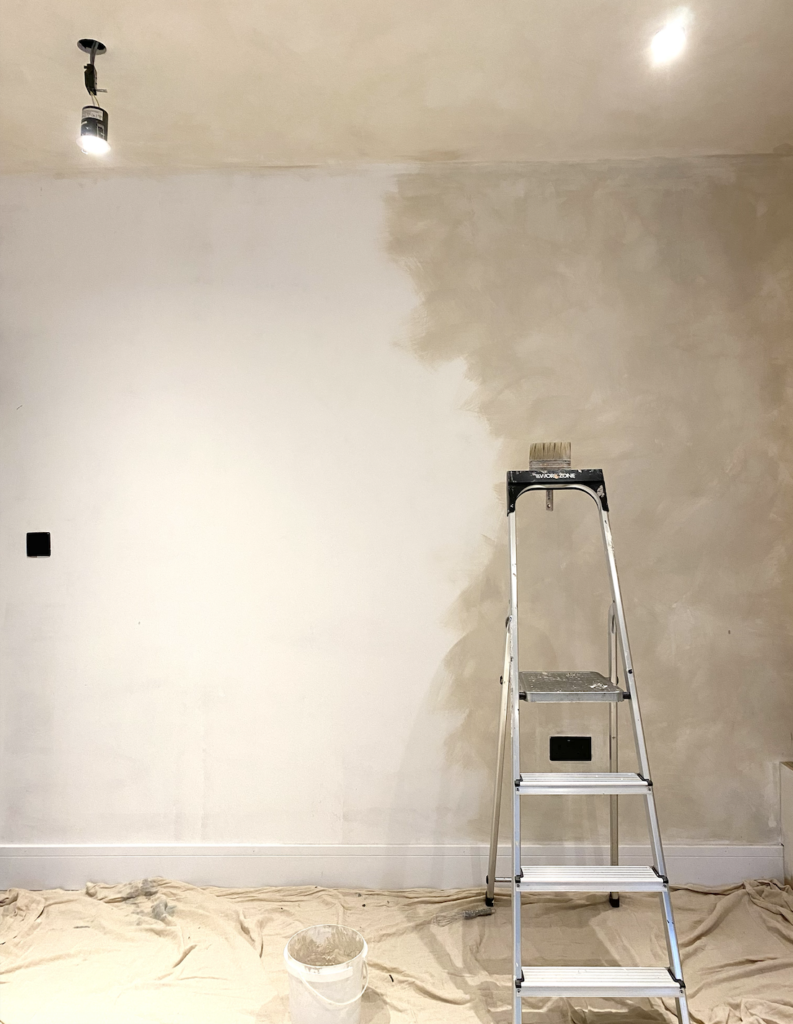How to Limewash Your Walls: A Step-by-Step Guide
How to Limewash: A Simple Step-by-Step Guide
Limewashing is a beautiful and breathable way to bring natural texture and softness to your walls. Whether you're new to it or refreshing your knowledge, this guide walks you through everything you need to know—from prep to finishing touches.
Before You Start
Your delivery has arrived and you're ready to get going — but first, make sure you’ve got all the right equipment:
A thick block brush with natural bristles (essential for applying limewash properly)
A clean bucket for mixing
A roller (optional, mainly for applying the prep coat)
Plenty of microfibre cloths to wipe up any spills or drips as you go
Paint Preparation
Before starting, ensure the paint is properly mixed for optimal performance:
Stir the paint in its original container for a minimum of 2 minutes or 200 strokes with a whisk.
Pour the paint into the application bucket and stir it again thoroughly.
While painting, continue stirring the paint periodically to prevent minerals from settling as sediment at the bottom.
Surface Preparation
Before applying any limewash, the surface must be properly prepared:
Only use limewash on clean, dry, white plastered walls.
Do not apply over pink plaster, plastic paints, acrylic, cement or emulsion finishes.
If your wall is already painted and the limewash doesn’t stick or feels watery, you must use a mineral-based prep coat to ensure proper adhesion and porosity. This step is essential for a lasting and authentic finish.
How to Apply Limewash
Clean the Walls
Make sure all surfaces are clean, free from dust, and fully dry.
Mix the Limewash
Shake the container thoroughly. Pour into your bucket and stir well for 1 minute until the texture is consistent.
First Coat
Apply using your block brush in loose, unstructured X strokes. The goal here is to create a textured, organic base—don’t worry about small gaps or white patches at this stage, but avoid leaving large sections uncovered.
https://uk.pinterest.com/pin/1196337404704118/
Dry Time
Allow the first coat to dry for at least 4 hours. Drying time may vary depending on the room’s temperature and humidity.
Second Coat
Apply a second coat using the same X brush strokes. This time, make sure the entire surface is fully covered and even, leaving no gaps. The layering will add depth and natural variation.
Optional Third Coat
If the wall still needs more coverage, you can apply a third coat. However, be mindful: too many coats can flatten the texture and result in a smoother finish, which may take away from the intended look. Limewash is all about visible brush marks and natural depth—don’t overdo it.

Aftercare & Maintenance
Limewash is designed to patina naturally over time.
You can gently clean the surface using a soft, damp cloth.
Do not scrub or use harsh cleaners.
Avoid excessive moisture or steam exposure, especially in bathrooms or kitchens without good ventilation.
Safety & Storage Warnings
- For interior use only.
- Wear protective gloves and eye protection when handling limewash.
- Use in a well-ventilated area.
- Avoid contact with skin and eyes. In case of contact, rinse thoroughly with clean water.
- Do not ingest.
- Keep out of reach of children.
- Store in a cool, dry place, sealed tightly. Do not allow to freeze
Enjoy!
